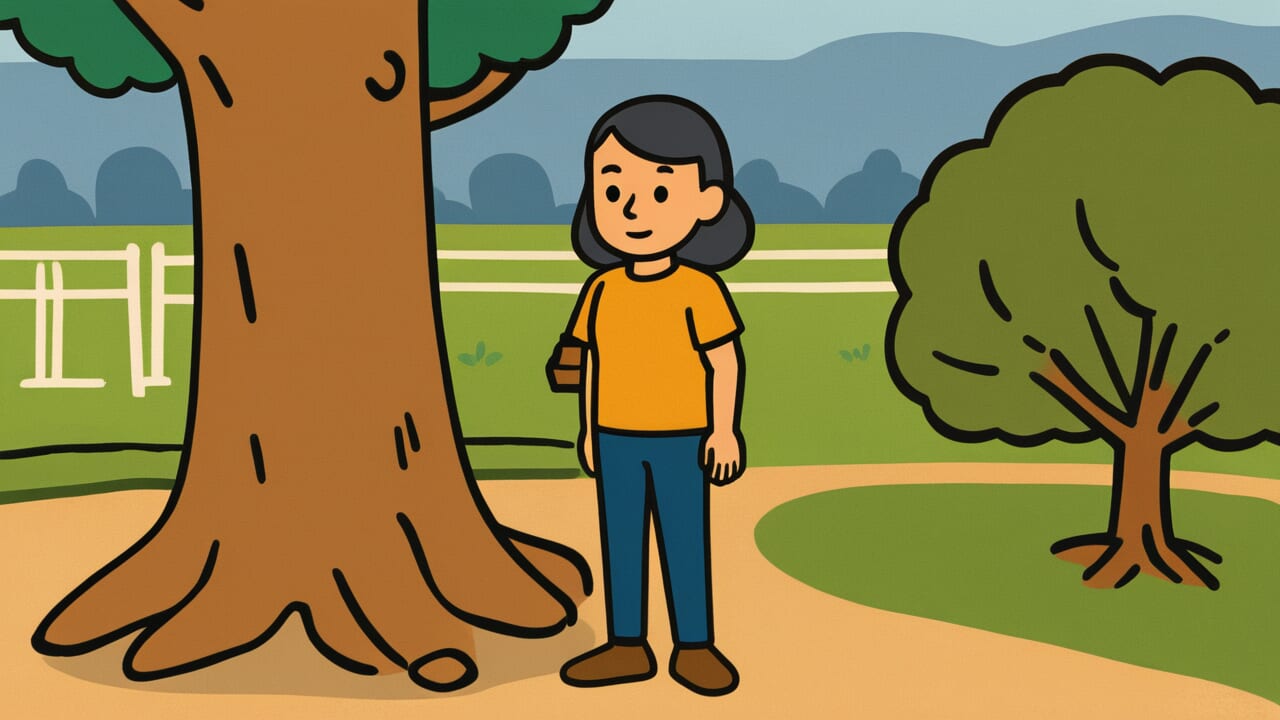How to Read “A person at ten years, a tree at one jō”
Hito wa jussai ki wa ichijō
Meaning of “A person at ten years, a tree at one jō”
This proverb expresses a natural principle. Both people and trees grow steadily according to their own timelines.
A person takes ten years to grow one stage. A tree achieves visible growth of one jō in a single year.
This contrast shows an important truth. Growth has its own unique pace, and we move forward reliably by following it.
People use this saying to encourage someone feeling impatient. It also helps recognize those making steady efforts.
When someone worries that results aren’t coming quickly, this proverb reassures them. Growth will definitely come.
Modern society often demands instant results and efficiency. But this proverb reminds us that real growth takes time.
It teaches us to trust the process. Human growth isn’t measurable yearly like a tree.
However, if you look back over ten years, you’ll notice definite change.
Origin and Etymology
The exact literary origin of this proverb is unclear. However, the structure of the words offers interesting insights.
The contrast between “ten years” and “one jō” is particularly striking.
First, let’s consider the expression “ten years.” In modern Japanese, we might say “ten years” differently.
Using “ten years of age” shows a perspective that measures human growth by age. This represents a biological view of measuring growth along life’s timeline.
Meanwhile, “one jō” is a unit of length equal to about three meters.
The idea that a tree grows one jō in a year varies by species. However, it likely refers to bamboo or young trees known for rapid growth.
Bamboo especially grows remarkably in one year. It has long been a symbol of growth in Japanese culture.
The essence of this proverb lies in placing humans and trees side by side. This shows that each living thing has its own unique growth rhythm.
People grow in units of ten years. Trees grow in units of one year.
Each achieves reliable growth according to its own timeline. This contrast teaches the importance of growing at nature’s pace without rushing.
This wisdom likely emerged from the observational skills of Japanese people with their agricultural culture.
Usage Examples
- That child has grown so much compared to ten years ago. A person at ten years, a tree at one jō, after all.
- Even if you can’t see results now, there’s no need to rush. A person at ten years, a tree at one jō—your abilities are surely building steadily.
Universal Wisdom
This proverb has been passed down because it answers a fundamental human anxiety. That question is: “Am I really growing?”
We rarely notice our daily changes. Just as we don’t notice changes in our face when looking in the mirror every day, growth is too close to see.
This anxiety about invisible growth is a timeless human concern. It hasn’t changed from ancient times to today.
Our ancestors made an important discovery through observing nature. Trees definitely grow taller each year, but people watching them daily can’t tell.
Yet when measured after a year, the growth is certain. Humans must be the same, they realized.
The deeper insight recognizes the difference in growth speeds between people and trees. One year for a tree, ten years for a person.
This contrast suggests that each life has its own unique rhythm. Comparing yourself to others is meaningless.
Humans are creatures who compare. We may feel anxious when others seem to grow faster.
But look at the natural world. Bamboo grows large in one year. Oak trees grow slowly.
Neither is superior to the other. This proverb represents human wisdom learned from nature’s principles.
It teaches the importance of trusting your own pace of growth.
When AI Hears This
From birth, a human baby devotes about 60 percent of consumed energy to the brain. This is an abnormal figure in the biological world.
Meanwhile, trees direct almost all energy from photosynthesis to producing cellulose, their structural material. In other words, humans invest in “invisible growth” while trees invest in “visible growth.”
This strategic difference appears in their forms after ten years. A human child reaches about 120 centimeters tall but already manipulates language and thinks abstractly.
The brain’s neural circuits have already formed 1,000 trillion synaptic connections. In contrast, a tree reaches three meters (one jō) in height.
Its physical presence is overwhelming, but its nervous system is zero.
What’s interesting is that both share the same purpose: “winning the competition.” Humans increase efficiency in obtaining food and avoiding danger through intelligence.
Trees monopolize sunlight through height. Both are optimal solutions for maximizing survival probability, yet their investment targets are complete opposites.
Furthermore, humans suppress physical growth until age ten as a tradeoff to prioritize brain completion.
If humans invested everything in structural material like trees, they might reach three meters in ten years. But they would lose the ability to think.
Life becomes completely different depending on where limited energy is allocated.
Lessons for Today
What this proverb teaches modern people is this. Growth requires the courage to “believe and wait.”
Don’t you feel anxious about your own slowness every time you see others’ success on social media?
But think about it. You ten years ago and you today are definitely different people.
Your knowledge, experience, and relationships have all accumulated.
What matters is believing in today’s small step. Daily reading, small improvements at work, conversations with people.
Even if invisible, these things are definitely accumulating within you. Just as you can’t see a tree growing taller each day, yet after one year the growth is certain.
Modern society demands instant results. But truly valuable growth takes time.
This proverb teaches the importance of not rushing and maintaining your own pace.
The you of ten years from now is the crystallization of today’s efforts. Believe in that future and keep accumulating what you can do today.



Comments